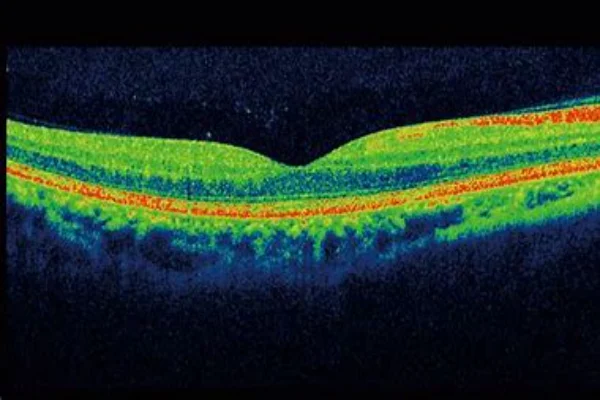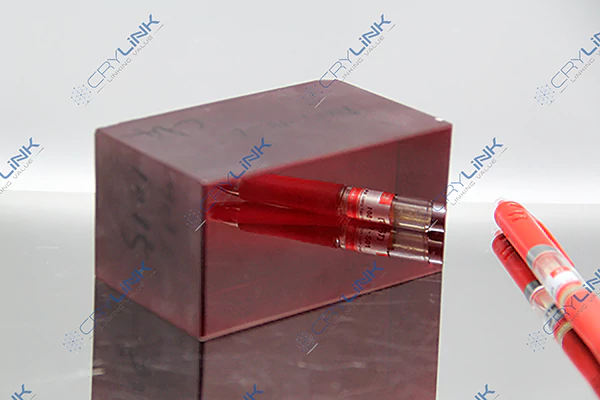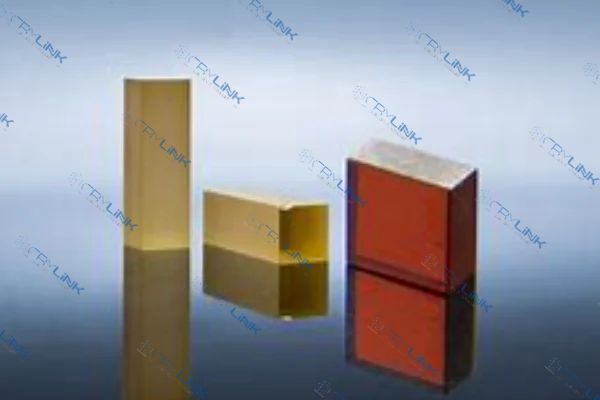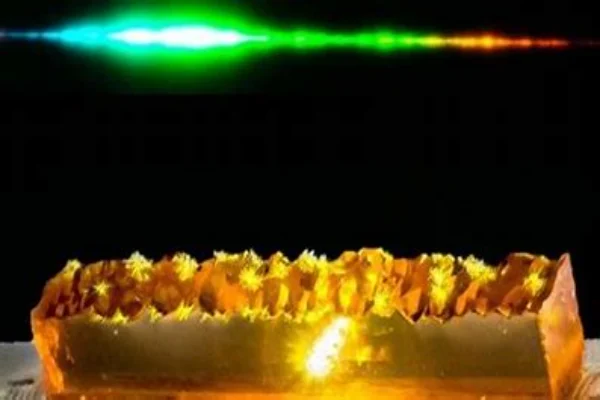Introduction to Supercontinuum Generation
Supercontinuum generation is a fascinating and complex phenomenon in the field of optics and photonics. It involves the production of a broad spectrum of light, often spanning over an octave, from a narrowband input. This process is typically achieved through the nonlinear interaction of intense light pulses with a medium. The resulting light source, known as a supercontinuum, has unique properties that make it highly desirable for a wide range of applications, from spectroscopy to imaging.
The Role of Ti:Sapphire in Supercontinuum Generation
In the realm of laser technology, Ti:Sapphire has emerged as a game-changer. Its unique properties have made it a cornerstone in the development of ultrafast lasers, which are capable of producing pulses of light that last only a few femtoseconds. These ultrafast lasers have found wide-ranging applications, particularly in the field of ultrafast spectroscopy.
The ability to generate ultra-short pulses of light has allowed scientists to study ultrafast processes in chemistry and biology in unprecedented detail. For instance, these lasers have made it possible to capture snapshots of chemical reactions as they occur, providing valuable insights into the mechanisms of these reactions. This has led to a deeper understanding of various chemical processes, which has had far-reaching implications in numerous fields of study.
Furthermore, the broad emission spectrum of Ti:Sapphire has made it an ideal choice for optical coherence tomography (OCT), a non-invasive imaging technique used in medical diagnostics. OCT uses the broad spectrum of light produced by a supercontinuum to create high-resolution, three-dimensional images of biological tissues.
This has revolutionized the field of medical imaging, allowing for the early detection and diagnosis of various diseases, including cancer and macular degeneration. The detailed images produced by OCT provide clinicians with a wealth of information, enabling them to make more accurate diagnoses and devise more effective treatment plans.

Looking ahead, the future of Ti:Sapphire in supercontinuum generation appears bright. As research in this field continues, we can expect to see even more innovative uses for this remarkable crystal. For instance, there is ongoing research into the use of Ti:Sapphire in the generation of attosecond pulses, which would open up the possibility of studying even faster processes than currently possible. This could potentially revolutionize our understanding of ultrafast processes, leading to breakthroughs in various fields of science.
Furthermore, the use of Ti:Sapphire in other nonlinear optical processes, such as frequency conversion and optical parametric oscillation, is also a promising area of research. As we continue to push the boundaries of what is possible with Ti:Sapphire, it is clear that this crystal will continue to play a central role in the field of supercontinuum generation.

The Emergence of CrZnSe Crystals in Supercontinuum Generation
The potential of CrZnSe crystals in supercontinuum generation is not limited to the applications we’ve already discussed. The unique properties of these crystals, particularly their broad emission spectrum and high nonlinear refractive index, make them a versatile tool in the field of optics and photonics. As we delve deeper into the capabilities of these crystals, we uncover a plethora of potential applications that could revolutionize various fields of study.
One such application is in the field of environmental science. The broad emission spectrum of CrZnSe crystals makes them ideal for remote sensing applications, where they can be used to detect and measure the concentration of various gases in the atmosphere. This could prove invaluable in monitoring air quality and tracking the progression of climate change.
In the medical field, CrZnSe crystals could be used to develop more advanced diagnostic tools. The broad spectrum of light produced by these crystals could be used in a technique known as diffuse reflectance spectroscopy, which can provide detailed information about the composition and structure of biological tissues. This could potentially allow for the early detection of diseases such as cancer, improving patient outcomes.
In the realm of telecommunications, the high nonlinear refractive index of CrZnSe crystals could be harnessed to improve the efficiency of optical communication systems. These systems rely on the transmission of light signals over optical fibers, and the use of CrZnSe crystals could potentially allow for the transmission of more data over longer distances, improving the speed and reliability of these systems.
In addition to these applications, ongoing research into the properties and potential uses of CrZnSe crystals continues to uncover new possibilities. For instance, there is currently research being conducted into the use of these crystals in the development of more efficient solar cells. The broad emission spectrum of CrZnSe crystals could potentially be harnessed to absorb a wider range of the solar spectrum, improving the efficiency of these cells.
As we continue to explore the potential of CrZnSe crystals in supercontinuum generation, it is clear that the possibilities are vast and varied. From environmental science to telecommunications, these crystals have the potential to revolutionize a wide range of fields. As research in this area continues, we can expect to see even more innovative applications for these remarkable crystals.

Comparing Ti:Sapphire and CrZnSe in Supercontinuum Generation
The comparison between Ti:Sapphire and CrZnSe in supercontinuum generation is a fascinating exploration of the unique properties and applications of these two materials. Ti:Sapphire, with its broad emission spectrum and high thermal conductivity, has long been the crystal of choice for many applications in the field of optics and photonics.
Its ability to generate ultra-short laser pulses has made it a cornerstone in the development of ultrafast lasers, which have found wide-ranging applications, particularly in the field of ultrafast spectroscopy. Furthermore, its high thermal conductivity ensures stable operation even under high pumping powers, making it suitable for high-power applications.

On the other hand, CrZnSe, a relatively new player in the field, has shown great promise in supercontinuum generation. Its broad emission spectrum, spanning from 700 to 3000 nm, makes it particularly suitable for mid-infrared applications. This has led to its use in infrared spectroscopy, a technique that provides valuable information about the structure and composition of molecules.
Furthermore, its high nonlinear refractive index enhances the supercontinuum generation process, allowing for the efficient conversion of the input light into a broad spectrum of wavelengths. This has opened up new possibilities in the field of nonlinear optics, including frequency conversion and optical parametric oscillation.
While both Ti:Sapphire and CrZnSe have their unique strengths, it’s important to note that the choice between these two materials is not a matter of one being superior to the other. Instead, the choice depends on the specific requirements of the application at hand. For applications that require ultra-short laser pulses, such as ultrafast spectroscopy and OCT, Ti:Sapphire would be the crystal of choice. On the other hand, for mid-infrared applications and nonlinear optics, CrZnSe would be more suitable.
In conclusion, both Ti:Sapphire and CrZnSe play crucial roles in the field of supercontinuum generation. Their unique properties make them suitable for a wide range of applications, and ongoing research continues to uncover new possibilities for these remarkable crystals. As we continue to explore the potential of these materials in supercontinuum generation, we can expect to see even more innovative applications and breakthroughs in the field of optics and photonics.

Conclusion
The applications of Ti:Sapphire and CrZnSe crystals in supercontinuum generation are vast and varied. Their unique properties make them ideal for a range of applications, from ultrafast spectroscopy to mid-infrared applications. As research in this field continues, we can expect to see even more innovative uses for these remarkable crystals. The future of supercontinuum generation is bright, and these crystals will undoubtedly play a significant role in shaping that future.
Frequently Asked Questions
- What is supercontinuum generation?
Supercontinuum generation is a process that produces a broad spectrum of light from a narrowband input through the nonlinear interaction of intense light pulses with a medium. The resulting light source, known as a supercontinuum, has unique properties that make it highly desirable for a wide range of applications. - What are the unique properties of Ti:Sapphire?
Ti:Sapphire has a broad emission spectrum, high thermal conductivity, and excellent thermal shock resistance. These properties make it ideal for the generation of ultra-short laser pulses and stable operation under high pumping powers. - What are the applications of CrZnSe in supercontinuum generation?
CrZnSe is used in mid-infrared applications and nonlinear optics. Its broad emission spectrum allows for the study of molecular vibrations in infrared spectroscopy, while its high nonlinear refractive index makes it suitable for frequency conversion and optical parametric oscillation. - How do Ti:Sapphire and CrZnSe compare in supercontinuum generation?
Ti:Sapphire is ideal for ultrafast spectroscopy and OCT due to its broad emission spectrum and high thermal conductivity. CrZnSe, on the other hand, is suitable for mid-infrared applications and nonlinear optics due to its broad emission spectrum and high nonlinear refractive index. - What is the future of Ti:Sapphire and CrZnSe in supercontinuum generation?
As research continues, we can expect to see more innovative uses for these crystals in supercontinuum generation. Their unique properties make them ideal for a range of applications, and they will undoubtedly play a significant role in shaping the future of supercontinuum generation.

Frank
Frank graduated from the University of Shanghai for Science and Technology, majoring in optics. As a technical engineer at Crylink Company, he deeply understands crystal materials and laser components.
Related Video(s) with this Article
Related Product(s) with this Article
Related Application(s) with this Article
